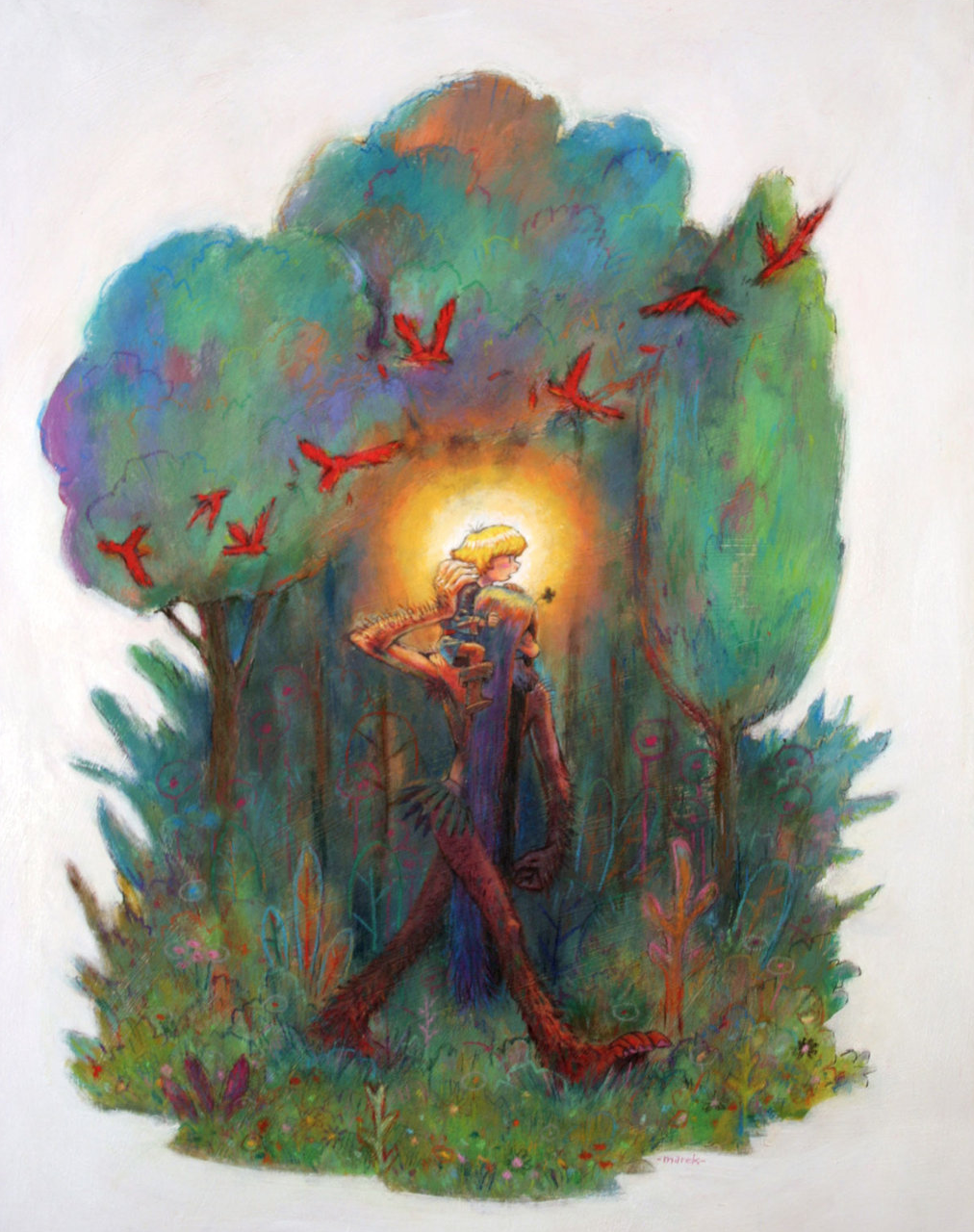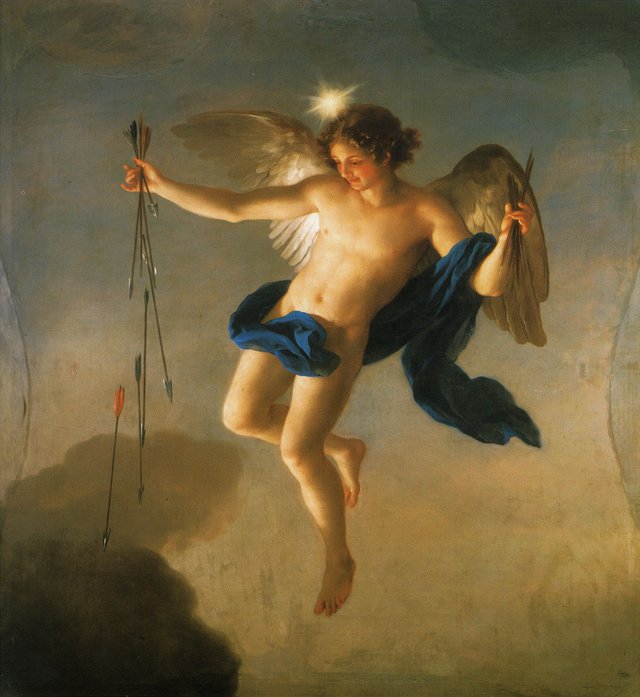The Solstice, Moving through ‘The Shadow,’ and Venus as an Evening Star
Today’s Solstice occurs with the Sun in a conjunction with Saturn, a guest at his own Saturnalia party. Just before Christmas, Mercury will have come to a stop in its retrograde process, and just before the New Year (which will occur on a Full Moon), Uranus will turn direct to integrate several months of electrical rewiring. This New Year begins with a surge of hot, martial energy towards our higher aspirations, as Mars meets Jupiter for a good week. As we approach next month’s New Moon, Venus will pass the Sun and enter its evening star phase, which it will do in a precise, picturesque conjunction with Pluto and sextile of Mars/Jupiter on January 9th.
Saturnalia, Saturn into Capricorn, and the Galactic Center
This year we have a somewhat special Solstice, as Saturn is conjunct the Sun when they both move into tropical Capricorn. This is an already Saturnian season of the year–Saturn is considered to be the ‘Ruler’ of Capricorn, associated with wintery harshness and hardiness, the quiet solitude of hibernation, and celebrated in his wild side in festivals like Saturnalia. Since Saturn will be in Capricorn for the next 2 and a half years, we might consider this to be the beginning of a long winter of sorts. We can prepare for this by contemplating the different ways this time of year has been honored.
The I Ching has a hexagram that relates to the Winter Solstice, which is called ‘The Return,’ or ‘Renewal.’ It speaks to normal affairs being halted, encouraging a return to our beginnings before we start anew. The hexagram reads, ‘Thunder is inside the earth. Thus on the day of the Winter Solstice, the ancient kings ordered the city gates closed. He who comes and goes will have no error. Friends come without harm. The course repeats itself.’ Here, we can understand a slow, ritualistic nature of a Saturnian master, pausing ceremoniously before they move in a new direction. We can also think of the stark clarity of winter and the evergreens that stay vibrant through it.
The Roman festival of Saturnalia paints a more provocative picture of this pause in the cycle of the year. In a subversion of the normal order of things, masters served their slaves feasts, slaves were allowed to speak their minds without fear of punishment, gambling was allowed out in the open, and everyone gave each other gifts–especially gags or cards with bad poetry. Here we can think of the etymological relationship between Saturn, Satyr, Satire, and Saturnine. The composed strength that can be found in the winter has zest and humor; a Saturnine gloom or darkness is a distortion of this spirit.

A third, more intense way we can look at Saturn is through the Nakshatra that is behind the Sun right now. At this time in history, the Sun is in front of the Galactic Center during the Winter Solstice, which Vedic Astrology calls ‘Mula,’ or ‘the Root.’ At the middle of our Milky Way are thousands of huge stars, circling a supermassive black hole. Poetically, this is thought to relate to an earlier form of Kali, the Dark Mother, called Nritti, which literally means lawlessness or destruction. Like a black hole, the great womb from which we came and will return, Kali is thought to channel this destructive force towards the roots of delusion and superficiality, wrathfully sparking the regeneration of life. Classically, Saturn is considered a malefic for its relationship to death and limitation. In contemplating Kali, we might understand how these are integral processes in the transformation of consciousness.
Retrogradation and Moving Through the ‘Shadow’
After a fall of retrogrades, Mercury and all of our outer planets will be moving forward by the New Year, which is a somewhat rare event. On a basic level, this speaks to a few months of ease in expressing qualities of consciousness that are normally on the fringes of daytime awareness: the masterful, compassionate discernment of Chiron, the electric, liberated ingenuity of Uranus, the dreamlike intuitive and poetic capacity of Neptune, the dark, soulful power of Pluto, and Eris’ lighthearted yet righteous sense of equilibrium.
Still, each retrograde period is preceded and followed by movement through the ‘shadow,’ the territory the planet retraced its path through. Thus, many parts of our charts and lives get passed over three times in a planetary transit. The last leg comes with a process of integration, going back through somewhat familiar terrain from a different angle. As opposed to this fall, which was a time of reworking our connection with these more peripheral dimensions of ourselves, the next few months will bring a process of integration. In April, Pluto will turn retrograde, breaking this streak.
Amidst this, Ceres, an asteroid that relates to nourishment and pleasure (especially through food and touch), has just turned retrograde on the North Node. If it weren’t on the North Node, I might not have paid attention to it, but this spot really highlights its importance, especially since the North Node will follow it as it moves backward in the sky (the Nodes almost always move in retrograde motion). Since the North Node indicates a direction of evolution, this suggests that there is an important process of reworking the way we nourish ourselves and each other. Perhaps it’s necessary to experiment with some mode of new mode of nourishment, to fast from some typical sustenance, or to simply find new ways to listen to what is needed and savor our experience. This process will continue unfolding into May.
Sparring with Sensei and Venus as an Evening Star
As we approach the new year, Mars will meet Jupiter in the morning sky. When two planets go conjunct, their archetypal energies fuse–here, we can contemplate the merging of the fiery, aggressive, and athletic part of ourselves with our impulse towards expansive experiences and a sense of meaning or faith in life. Putting the two together, we might think about abundant physical energy heading towards our higher ideals, upgrading our physical practices, or enlivening and embodying our spiritual maps. I think this combination is well encapsulated by the masterful dancer, yogi, martial artist, or adventurous athlete.
All in all, it’s a rare and supportive aspect to lead into our New Years resolutions, although it might be a bummer to find your energy and enthusiasm waning a couple weeks into the year. Here, we might try to really listen to the wisdom of this physical encounter with wisdom. As it will be happening in the Vedic Nakshatra of Vishaka, ‘The Star of Purpose,’ our lesson might have to do with defining our desires and devoting ourselves to something limited. Vishaka means, ‘one-pointedness,’ or ‘intensely decisive.’
These two will be meeting in a 60 degree, sextile aspect with Pluto, which emphasizes an intense, cathartic, or transformative nature to this spiritualized physical energy. As the Sun separates from Saturn and moves more deeply into Capricorn, this Plutonian energy will be increasingly emphasized, culminating on January 8th, when we have an uncanny alignment of several planets: on the same day that the Sun meets and passes Pluto, Venus will move past each of them as well, entering her phase as the Evening Star. At the same time, Mars and Jupiter will be sextiling these three, the Moon will be in an opposition to Uranus, newly moving forward, and Mercury will be joining Saturn, the planet that sent them retrograde earlier this month. Days like this don’t happen very often–I’ve had my eye on it for months.
I see Venus at the center of this dance. Passing the Sun, she will gradually become the Evening Star, marking this as the midpoint in a cycle that began when she retrograded back past the Sun on March 25th. Since then, she has been the Morning Star, Lucifer, ‘The Light Bringer,’ associated with the light of dawn and the fresh morning dew. This phase is thought to bring a spontaneous, eager, or impulsive relationship to life, emphasizing the exploration and development of our subjective tastes, desires, and gifts. This then turns into Venus as the Evening Star, Hesperus, which is the love goddess with a more deliberate makeup. Our experiences with the morning star are distilled, and we operate with more objectivity and mutuality, orienting ourselves towards the collective and the Other more gracefully. Venus will be in this phase until October, when she retrogrades, descending to repeat the cycle.

On Tuesday, January 9th, we might tune into the beginning of this maturation, contemplating what sort of catharsis or release might need to take place (Venus in conjunction with Pluto), where you can integrate a more brave, meaningful, and focused spirit (Mars/Jupiter sextile), what structures, agreements, and attitudes need to be in place to support this new way of relating (Mercury conjunct Saturn), and how you might find an outlet for your creative genius in a clearsighted manner (Moon opposing Uranus). It might be helpful to remember that this phase is just beginning–its development can be broken down into smaller stages. One of my favorite books on Venus says that this initial entry into the Evening Star phase (during which Venus is still invisible to us) is about ‘forging a foundation of open-hearted power.’ The author gives an image for meditation during this period: ‘The aroma of hard shells being cracked open.’ Amidst all the energy of these few days, it might be helpful to tune into that nascent, heart-opening spirit, contentedly letting it unfold into the new year.
Image: Iron John, by Marek (http://cargocollective.com/marek)
astrologyally.com/readings